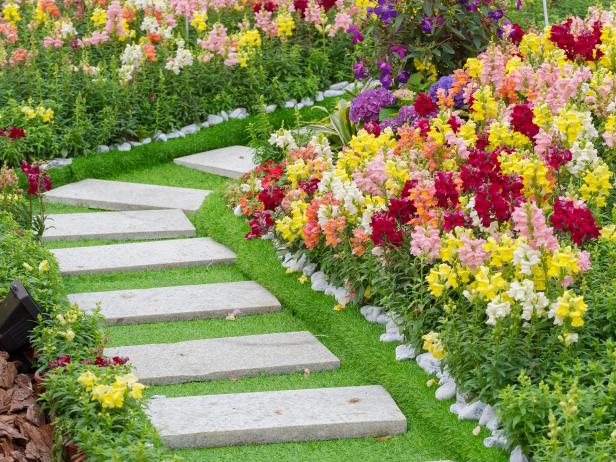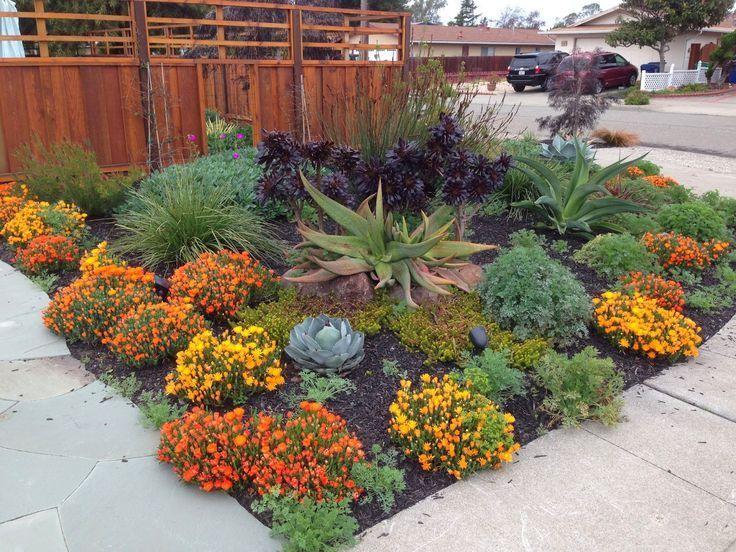Premier Landscaping Company Jacksonville: Exceptional Services for Beautiful Gardens
Wiki Article
Elevate Your Residential property's Visual With Lasting Landscape Design Designs and Eco-Friendly Practices

Benefits of Lasting Landscaping
Executing lasting landscaping methods not only conserves all-natural resources yet also promotes biodiversity and improves overall ecological health. One considerable benefit is the decrease of water consumption via the use of drought-resistant plants, rainfall yards, and reliable watering systems.Moreover, sustainable landscape design can boost soil health by lessening making use of chemical fertilizers and pesticides, consequently creating a much healthier atmosphere for plant growth and valuable dirt microorganisms. This, subsequently, boosts the overall strength of the landscape to stand up to ecological stress factors and climate change influences - landscaping contractor Jacksonville. Additionally, lasting landscape design methods can bring in diverse wild animals, including pollinators like butterflies and bees, cultivating a much more well balanced and vivid ecological community within the building
Incorporating Indigenous Plants
To build on the benefits of lasting landscaping, a critical concentrate on including native plants can further improve environmental strength and advertise biodiversity within the landscape. Indigenous plants are species that naturally happen in a specific area and have developed to grow in the regional climate, dirt conditions, and environment. By including indigenous plants in landscape design styles, homeowner can lower water usage, decrease the demand for chemical pesticides and fertilizers, and sustain the neighborhood wild animals population.Incorporating indigenous plants also aids in preserving the one-of-a-kind character and identification of a region's vegetation. These plants often require less upkeep as soon as developed, making them a sustainable and economical landscape design option in the future. Additionally, native plants can draw in native pollinators like butterflies and bees, adding to the overall wellness of the community.
When picking indigenous plants for landscaping jobs, it is necessary to choose species that are appropriate to the specific environmental problems of the site. Consulting with regional baby rooms or herb gardens can give beneficial support on picking the right native plants for a certain location. By integrating indigenous plants right into landscape design designs, residential property proprietors can develop attractive, lasting exterior areas that benefit both the setting and the community.

Water Preservation Methods
Reliable irrigation approaches play a crucial function in sustainable landscape design methods, making certain optimum water conservation initiatives in outdoor areas. Applying strategies such as drip irrigation, rainwater harvesting, and wise watering systems can considerably decrease water wastefulness while preserving a healthy and balanced landscape. Trickle watering delivers water directly to the origins that site of plants, reducing evaporation and drainage. Rainwater gathering entails accumulating rain from roofs and storing it for later use in watering, reducing the dependence on metropolitan water resources. Smart irrigation systems use weather condition information and dirt moisture degrees to adjust sprinkling timetables, protecting against overwatering and advertising water performance.In addition to advanced watering approaches, xeriscaping is another water-saving landscaping strategy that concentrates on using drought-resistant plants, compost, and efficient watering to produce a low-water landscape style - bush removal Jacksonville. By picking native plants that are well-suited to the regional climate and soil problems, homeowner can lower the need for too much watering, ultimately preserving water and promoting a sustainable outside atmosphere
Eco-Friendly Hardscaping Concepts
Enhancing outdoor spaces with environment-friendly hardscaping features can add substantially to lasting landscape design techniques. When considering hardscaping elements, select products like reclaimed wood, recycled concrete, or natural stone to decrease environmental influence. These products not only include an one-of-a-kind aesthetic allure to your outside space however also lower the requirement for new sources extraction.Carrying out absorptive paving options such as gravel or permeable concrete can help in reducing water overflow and advertise groundwater recharge. These choices allow rainwater to seep into the ground, preventing disintegration and decreasing the burden on stormwater systems.
Integrating indigenous plants right into hardscaping layouts can further boost eco-friendliness by sustaining regional wildlife and minimizing the requirement for too much watering or chemical therapies. By incorporating upright yards or environment-friendly wall surfaces, you can present extra plants right into city settings, boosting air top quality and biodiversity.
Including energy-efficient illumination, such as solar-powered LEDs, into hardscaping layouts can decrease power usage and reduced your home's carbon footprint. Focusing on environment-friendly hardscaping concepts not only enhances the elegance of your outside area however additionally demonstrates a commitment to environmental stewardship.
Maintenance Tips for Lasting Landscapes

Regularly trim plants to promote healthy growth and prevent overgrowth that can lead to pest diseases or infestations. Usage natural fertilizers to nurture the dirt and plants without unsafe chemicals that can leach into the setting.
Final Thought
In final thought, lasting read more landscape design techniques offer various benefits for property owners, from enhancing the aesthetic charm of the environments to advertising ecological conservation. By integrating native plants, executing water conservation strategies, and making use of green hardscaping concepts, homeowner can develop lovely landscapes that are likewise environmentally responsible. With correct maintenance, sustainable landscapes can prosper and contribute to a much healthier ecosystem for both people and wildlife.Moreover, sustainable landscaping can boost dirt wellness by minimizing the use of chemical fertilizers and chemicals, thus developing a healthier environment for plant growth and useful soil microorganisms.To construct upon the advantages of sustainable landscape design, a critical focus on incorporating indigenous plants can further boost eco-friendly resilience and advertise biodiversity within the landscape. By consisting of indigenous plants in landscaping layouts, property owners can reduce water usage, decrease the demand for chemical pesticides and fertilizers, and support the local wild animals populace.
These plants usually require less upkeep as soon as developed, making them a sustainable and cost-efficient landscaping remedy in the lengthy run. By integrating native plants into landscaping layouts, property owners can produce beautiful, lasting see this exterior areas that profit both the community and the environment.
Report this wiki page